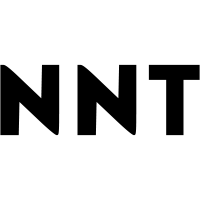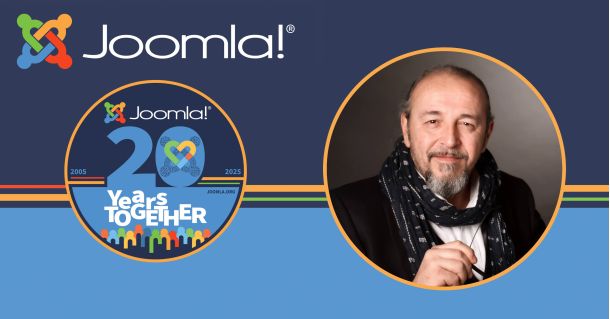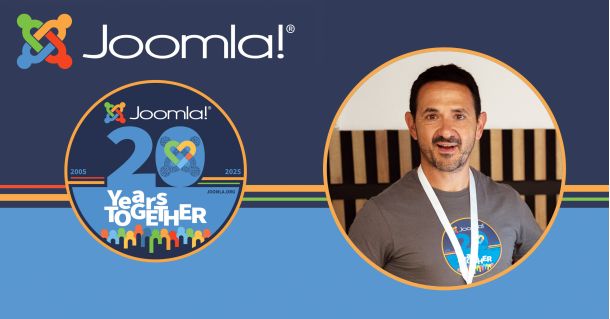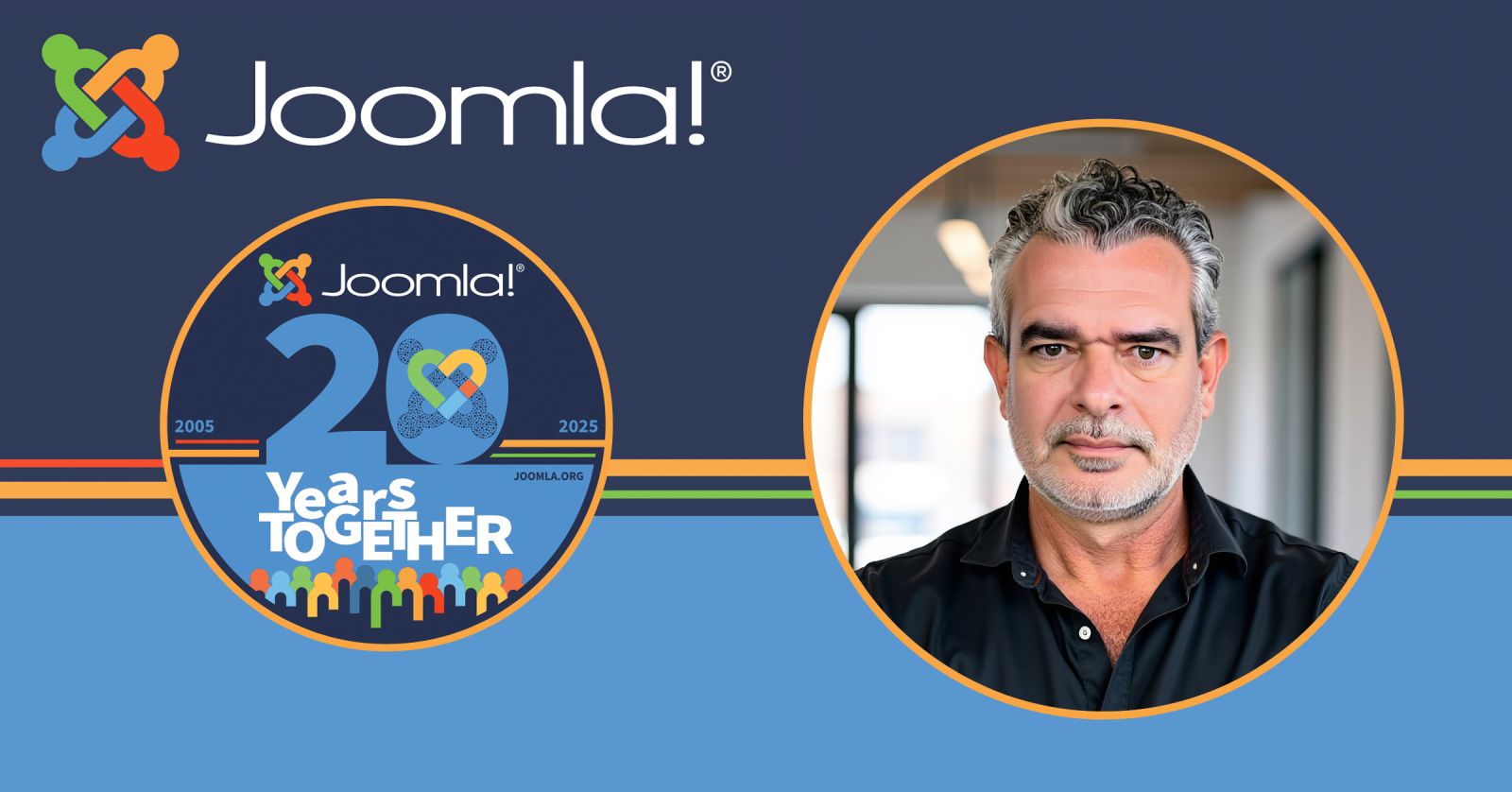
Joomla in Faces. Marc-Antoine Thevenet (data protection specialist)
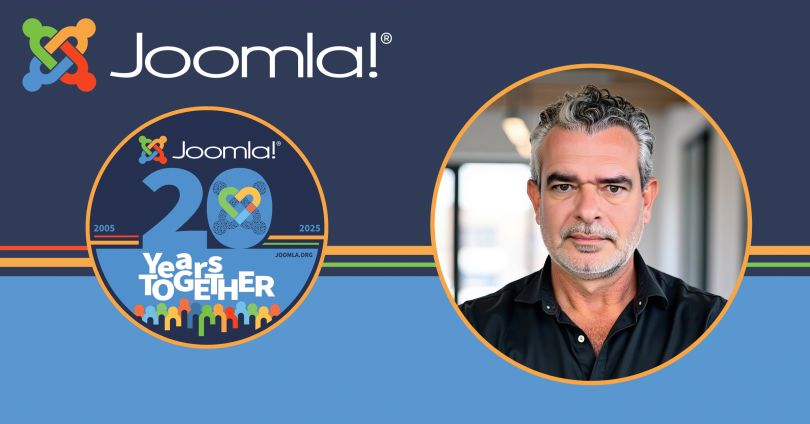
- Published: 22 October 2025
- Last modified: 24 November 2025


For over 15 years, Marc-Antoine Thevenet has been a cornerstone of the Joomla! project, shaping its very foundation. As a key figure in the Joomla! Production Leadership Team, his work directly influences the content management system used by millions. From coding and release strategy to mentoring new contributors, his contributions are both deep and wide-ranging. We sat down with him to discuss the past, present, and future of open-source CMS development.
1. Could you introduce yourself to the audience, please?
2. How did your first encounter with Joomla happen?
To be honest: kind of by chance! Back in 2007, with Sandra Decoux (who doesn’t know her?), we weren’t thrilled with the web agencies’ solutions for our business. So we decided to test the CMS options ourselves… and learn by doing. Lots of discoveries and wins, a few letdowns—the real school of life.
Timing-wise, it was the 1.5 era, or maybe already 2.5. What made the difference? The community. Without the Joomlers’ support—especially the forum—we probably wouldn’t have picked Joomla after all our trials. Their help was decisive… and it opened the door to a long and lovely story.
3. Have you worked with other Content Management Systems besides Joomla?
Hahaha, I confess, I’ve strayed a few times. Mostly with static setups like Grav or Jekyll for very specific needs. But every time I tried a heavier CMS, I snapped right back to Joomla. Why?
Because it’s both fun and rock-solid, with unique features like proper ACLs and true native multilingual (not a duct-taped add-on) that let you build bespoke sites without stacking thirty plugins.
And once again, the community matters: responsive, kind, pragmatic. That makes all the difference when you need to deliver something maintainable, secure, and clean over the long run. So yes, a few well-assumed dalliances—but my CMS “first love” is still Joomla, and the community involvement has only reinforced that choice.
4. Please introduce your current work and the projects you're involved with.
I drifted away from Joomla and its community—probably because I over-invested at one point. These days I’m focused on an old passion of mine: defending fundamental freedoms and protecting personal data. In practice, I work as a DPO/lawyer, helping companies and public bodies with compliance—especially international data transfers and cross-border relationships. I also jump in on data governance and cyber hygiene, because a great contract never fixes a lousy configuration.
I teach these topics at Université Savoie Mont-Blanc, and I still wink at the class: “the best CMS is Joomla.” (Promise, I hand the papers back after. 😜) On the ground, I support sensitive projects and regularly operate in cross-border contexts (EU ↔ North America, Indian Ocean).
I also make forays into Web3/Bitcoin projects with the same compass: minimize, secure, document. And when someone asks for web development, I advocate for a lean, maintainable approach—guess which CMS?—and I’m happy to recommend solid partners, notably IdimWeb, when you need bespoke, reliable work. Long story short: I’m no longer active in the Joomla inner circle (which has more or less forgotten me), but I remain a firm ally of open source—and a champion of a useful, ethical, sustainable web.
5. GDPR holds web integrators to a high standard and requires specific knowledge to implement its rules. What are the most common mistakes you see web integrators make?
The list would be endless 😄. Mistake number one is thinking, “Since the client isn’t based in the EU, the GDPR doesn’t apply.”
Then come the usual suspects: cookies, trackers, and pixels firing before consent—even though clean technical solutions exist to block, log, and honor user choice. Same story with contact forms: collect everything “just in case,” forget minimization, and end up with mandatory fields that have no business being there. As for cookie banners that feel like psychological puzzles… you can be simple, clear, and symmetrical.
Another classic: no retention periods. Data piles up in a digital attic “just in case”—until the day you’re frantically looking for an exit. A readable retention policy, automated purges, and anonymization where needed: your future self will thank you.
We don’t talk enough about accessibility (RGAA) or the AI Act, yet both are very real. One directly shapes your interfaces and brand; the other governs your “smart” features (transparency, governance, logs, risk management). Ignore them, and you’re taking on legal and technical debt. Last but not least: processors. Hosting, email, analytics, captcha… people accept T&Cs without checking compliance, transfers, or data-protection clauses. A bit of due diligence saves nasty surprises (and a few cold sweats).
Joomla bonus: pick lean extensions (with data docs and purge hooks), put notices and consent right next to your forms via overrides, and keep your updates/security changelogs with a ready-to-roll rollback plan.
Golden rule: minimize, secure, document. And when in doubt… document again. 😉
Need a quick outside look? My DMs are open.
6. What resources do you think the community needs to better comply with GDPR? For example, are there specific extensions that would help?
Good news: lots of useful things are still missing… and totally within reach. Here’s what would really help (promise: concrete and plug-and-play).
- An opinionated CMP for Joomla Clean banner, symmetrical “Accept all / Reject all” buttons, purpose-level granularity, real script blocking, timestamped proof of consent, auto-scan mode for tags, and easy template integration. No need for 42 options—just the right defaults.
-
An opinionated CMP for JoomlaClean banner, symmetrical “Accept all / Reject all” buttons, purpose-level granularity, real script blocking, timestamped proof of consent, auto-scan mode for tags, and easy template integration. No need for 42 options—just the right defaults.
-
A per-site/extension Data InventoryA plugin that lists, for each extension: which data is collected, where it’s stored, for how long, and how to purge it. Bonus: a “data-light” badge on the JED to reward good actors.
-
Standard purge & anonymization hooksA tiny Joomla standard so all extensions expose the same events/pipelines: delete, anonymize, export. Result: truly cross-cutting “purge” buttons (and calmer nights).
-
A Retention ManagerCentralized retention plan: simple rules (“prospects 3 years,” “logs 3 months”), cron purges, anonymization, dashboard. Click, and it’s tidy.
-
The “Responsible Forms” packReady-to-use overrides: minimized fields, clear notices, properly wired consent box(es), double opt-in, logs, and email templates. (Let’s stop asking for a birthdate for a plumbing quote 😇)
-
A DPIA / e-commerce assistantA wizard for Hikashop/VirtueMart & co.: typical risks, recommended measures, exportable reports (PDF/CSV), and cross-border transfer checks.
-
Privacy Presets (security & accessibility)Privacy-by-default presets (disable the non-essential, self-host assets, IP anonymization, security headers), plus an RGAA checklist to avoid UI missteps.
-
A community light-audit programTop 50 extensions reviewed by volunteers (data map, purge, consent) + a community label. Not to punish—just to lift everyone up.
Voila, voila, voila… and few more.
In short: a solid CMP, a clear data inventory, standardized purges, and presets that set the right defaults. Keep it simple, keep it clean, and document it.
Up for a Joomla Privacy Starter Kit? I’ll spin up the repo, you bring the coffee ☕️
7. A common situation is when a site needs a Data Protection Officer. Is it typical for a web developer to also take on the role of Data Protection Officer for a small business?
ABSOLUTELY NOT! (Or… very rarely—and it’s not a great idea.) 😉
A developer becoming the client’s DPO is like the referee scoring goals: convenient, but not exactly compliant.
Why? The GDPR spells it out (Arts. 37–39):
- Conflict of interest (Art. 38(6)): The DPO must not determine purposes or means. Yet devs often choose hosting, analytics, forms, and retention—i.e., they do determine the means.
- Independence & resources (Art. 38): The DPO reports to top management, acts without instructions, and needs time, budget, and access to information. Hard to do if you’re also the person “building” day to day.
- Competence (Arts. 37–39): The DPO is picked for expert knowledge of data-protection law and the ability to audit and push back. That’s not the same job as web integration. When I need a plugin, I ask a dev—fair enough, right?
- If a DPO is mandatory: hire an external, part-time DPO.
- If a DPO isn’t mandatory: appoint an internal GDPR lead (business/legal side), and let the developer implement the approved choices (CMP/consent tool, data minimization, security, retention & purge). Clear roles = better sleep for everyone.

8. Regarding GDPR and eCommerce: Is it legal to keep a user's data in the list of orders if that user has requested data removal?
Great question—I’ll try not to lose anyone along the way!
Yes… but not in every case and not any old way. When someone requests erasure (GDPR Art. 17, different from the right to object), you must delete anything that isn’t necessary. However, you can (and must) keep data that the law requires or that you need to defend your rights. In e-commerce, that typically means accounting and tax records (invoices, entries), certain contractual evidence (orders, deliveries, warranties), and, if needed, items useful in case of a dispute. In other words: don’t keep data “for convenience”—keep only what’s legally required, and keep the bare minimum.
-
Erase/Anonymize on the customer front sideaccount/profile, preferences, carts, visible history, newsletters, marketing pixels/IDs.
-
Keep a legal archiverequired orders/invoices, segregated with restricted access (for accounting/tax or legal defense) for the country-specific legal period (e.g., in France, long retention for accounting records; multi-year VAT obligations).
-
Minimize what remainsno unnecessary info, no retargeting, no commercial reuse. Where possible, decouple archives from marketing IDs (e.g., replace the email with a hash in operational systems, while keeping the email on the invoice only if the law demands it).
-
Document & explain
record it in your register/retention policy and tell the requester:
“We deleted your non-mandatory data. We’re retaining only X and Y for legal purposes for Z years, stored in a secure archive, with no marketing use.”
- Backups: don’t restore a backup just to purge one person. Let backups age out as normal; if you ever restore exceptionally, re-apply the erasure.
- Processors (payments, shippers, CRM, etc.): ask them to erase what isn’t required and verify their own retention periods for what must remain.
Compass to remember: legal purpose = yes, marketing = no. Keep only what the law mandates, lock it down, disclose the timeframe—and cut any “feed back” into the user experience.
Bonus: your future DPO will thank you at audit time.
9. Another question: If a user requests data removal, what should be done with server logs and backups that contain that data from a previous period?
A timeless classic—and it ties back to the previous question.
TL;DR: erase in production, minimize in logs, and let backups expire on their normal schedule. Don’t spin up a backup just to delete one person: that’s disproportionate… and risky.
Practically:
-
Production:delete/anonymize the user’s data in live systems (account, CRM, analytics, etc.).
-
Server logs:we don’t “rewrite history.” Keep only what’s necessary for security and traceability (lawful basis: legitimate interest), then rotate/purge automatically. Ideally anonymize (truncated IP), filter sensitive params, and ban any PII in error messages.
-
Backups:never restore a backup solely to erase one person. Let retention do its job. If you must restore for an incident, immediately re-apply the erasure request on the restored environment.
-
Processors:notify your hosts/tools (CDN, managed logs, APM) of the request and verify their retention periods.
-
Transparency:tell the person:
“Your active data has been deleted/anonymized. Logs and backups aren’t accessible in production; they’re kept for security for X days/months and then destroyed. In case of an exceptional restore, your erasure will be re-applied.”
-
Clear retention policy(e.g., HTTP logs ≤ 3 months; app logs 1–3 months).
-
Anonymization by default(truncated IPs, masked emails, drop sensitive payloads).
-
Log hygiene:no PII in traces; mask fields like Authorization, email, phone.
-
Automation:logrotate/cron, purge scripts, retention dashboards.
-
Documentation:register, “erasure & backups” procedure, and a clause in the privacy policy.
-
Compass:minimize, secure, document… and explain it simply. 😉
10. What recommendations do you have for web developers concerning GDPR compliance in Joomla?
The obvious answer: ask your DPO 😉
Here’s my no-nonsense starter kit for calm, compliant Joomla sites—practical, concrete, and headache-free.
-
Choose lean tools:well-known extensions, minimal data collection, clear docs (what data, purge, hooks). If a plugin “mystifies” its data use, walk away.
-
Quick data map:which forms, which data, why, where it goes (processors), and how long you keep it.
-
Minimization:only what’s truly needed (and no, the phone number isn’t “always needed” 😇).
-
Essential notices:who collects, why, legal basis, link to policy, consent boxes where required.
-
Newsletters:double opt-in; nothing pre-checked.
-
A proper CMP:symmetrical “Accept all / Reject all,” per-purpose granularity, real pre-consent blocking, timestamped proof.
-
Core “Privacy” component:exportable access/erasure requests—looks professional and works.
-
User Action Logs:track who did what.
-
Overrides:cleanly embed notices and consent right in the views.
TLS everywhere, admin 2FA, strong passwords, role hygiene with ACLs (retire those “forever
super-admins”).
Encrypted, tested backups kept off prod. Regular updates + a rollback plan.
If you add AI bits, keep transparency and prompt/decision logs. No black magic.
No retargeting without explicit consent; prefer clean transactional emails.
A living Privacy page (purposes, bases, durations, recipients, transfers) and an up-to-date register.
And yes… I did try to keep it short :D
11. Marc-Antoine, how would you describe your experience teaching courses or speaking to university students? How would you describe the emotions involved?
People who know me will tell you I’m a bit of a lone bear (for sure), and yet teaching, for me, is a lively blend of adrenaline, pedagogy… and humility. Right before I walk into the lecture hall, I’m torn between excitement (share, debate!) and that “good stage fright” of a musician tuning their guitar backstage.
In front of me: curious eyes, sometimes skeptical, often in a hurry. My job is to hook attention in five minutes: a real case (data breach, dark pattern), a needle-sharp question (“Who here actually reads the T&Cs?”), and we build from there. When the room flips from “GDPR = paperwork” to “GDPR = real business lever,” I know we’ve won the round.
Emotion-wise, it’s a full spectrum: the joy of those “aha!” moments (that collective oooh), the frustration at some… creative digital hygiene, and a quiet pride when a student says, “I got the cookie banner changed during my internship.” Let’s be honest: two hours can feel long if you stay theoretical. Hence my credo: 30% concepts, 70% real-world cases.
My method? Ultra hands-on: scenarios, group work, quick-fire audits of real sites, and a simple lens—minimize, secure, document. I give tools you can reuse the very next day (checklists, templates), and I show how compliance boosts conversion, reputation, and resilience—not just box-ticking.
That’s my mantra: yes, data protection respects users and avoids hefty fines but it can also be a fantastic commercial asset that puts you ahead of the competition.
There are funny moments too: the student convinced that “Azerty123!” is “uncrackable,” and a few other gems. We laugh, we fix, we move on. The goal isn’t guilt, it’s empowerment. After class, what I feel most is gratitude. Gratitude for the group’s energy, for the questions that challenge me, and for the trust of the teaching teams. And yes, a little endorphin hit when I read, “I finally understand what a DPO is for.”
In short: teaching keeps me sharp, curious, and very human. I leave drained… and recharged. Paradoxical? Sure. But that’s exactly the joy of aligning knowledge, practice, and transmission—with a wink to Joomla whenever I get the chance. 😉
12. How would you describe the French Joomla Community to the outside world in a few words?
The francophone community blends high standards, candor, and pride in a job well done—with enough humor (and panache) to self-correct.
Marc-Antoine
Ouch… the spicy question—the one I should probably play a joker on 😄.
Honestly, I’ve often crossed swords with the French-speaking community (and I do mean French-speaking, because it goes far beyond France, that diversity is a real strength). Its relationship with the wider Joomla world sometimes feels like miniature geopolitics: lots of love, a few misunderstandings, and that very… French urge to stand apart, as if we, heirs to the “Age of Enlightenment” (lights flickering a bit these days), held a special truth if not the truth. Old-timers Joomlers know what I mean. We even dubbed ourselves the “indomitable Gauls.”
For my part, I’ve always disliked clique culture, maybe because I’ve worked across so many different cultures.
Glass half full, though: that creative friction moves the conversation forward. Well-framed, conflicting viewpoints force us to clarify, document, and raise the bar. In the end, the francophone community blends high standards, candor, and pride in a job well done—with enough humor (and panache) to self-correct. That’s exactly what makes it valuable to the project.
A constructive thorn in the side, in the best possible way.
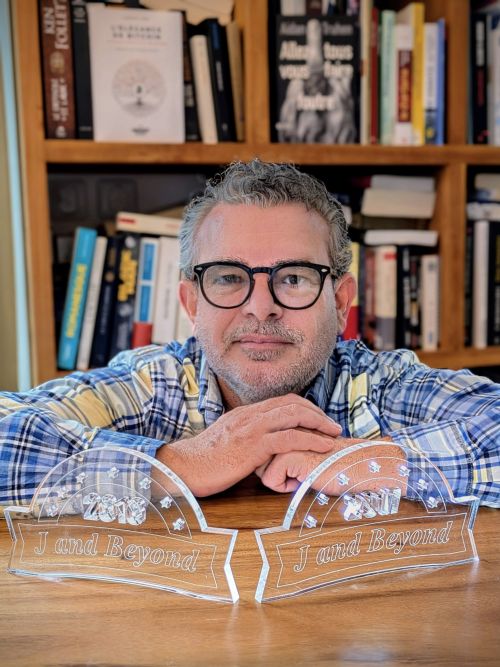
13. What motivates you to contribute to Joomla, and what do you get out of it?
At the core, it’s gratitude: Joomla gave me a lot: method, network, discipline. Contributing was my way of giving back to a project that shaped me, both technically and humanly.
Marc-Antoine
At the core, it’s gratitude: Joomla gave me a lot: method, network, discipline. Contributing was my way of giving back to a project that shaped me, both technically and humanly.
There’s also real values-alignment: open source, technical frugality, quality that lasts, privacy by design. Joomla lets me champion a practical, useful web—no smoke and mirrors.
What I’ve gained most is people. Bright, kind folks and a network you can count on. I’ve had memorable Joomla events all over the world (never asked for reimbursements :p ): you can clash over a beer at noon… and burst out laughing over another in the evening. So many Joomlers have vacationed at my place! That’s what sticks with me: ten years of genuine happiness. Don’t ask for the friends list, it’s as long as the WordPress plugin directory 😁. And a thought for those we’ve lost; you realize those bonds went far beyond a tech collaboration.
Another driver: curiosity. Learn, learn, and learn again, not so much as a dev (I’m not a coder), but through missions with teams from everywhere. Different cultures, faiths, languages, and approaches… one shared goal. You learn from others, you adapt, and you’re proud to get—say—for example an Indian and a Pakistani teammate working seamlessly together. That human and intellectual alchemy made me want to contribute and it still fuels my desire to pass it on.
14. What are the key advantages of Joomla that you would highlight?
As we wrap up, you can probably guess my answer: the Community.
It’s the reason I chose Joomla, the source of some of my best professional moments (and many lasting friendships), and the place that taught me to raise the bar—technically, humanly, ethically.
What does that community look like in practice? Skilled, approachable volunteers; FOSS governance that holds up even when the headwinds blow; events where you learn as much as you laugh; code reviews that lift the standard; a real culture of sharing (docs, best practices); and a reflex for privacy and quality. In short, Joomla is an excellent CMS of course but its community is what makes it a sustainable choice. Without it, Joomla would be a tool; with it, it’s a living project.
15. Joomla is turning 20. What are your thoughts on this milestone?
Twenty years already! That’s an eternity on the web. It’s the age where a CMS stops being just “tech” and becomes an institution. To me, it proves the architecture is sound, the FOSS governance is resilient (and still improvable), and the community doesn’t quit. We’ve seen the fads, the “revolutions” promised every six months… and Joomla is still here: solid, useful, elegant.
This jubilee is, above all, a thank-you to the volunteers—the people who patch, document, test, welcome, and teach. Without them, there’d be no 2.5, no 3, no 5… and no 20 candles.
What’s next? Keep welcoming newcomers (also keep it free as in freedom, and reach the not free as in free beer! If you want to keep pros), keep pushing innovation, double down on accessibility and privacy by design, and keep the docs and presets that set the right defaults. In other words: stay true to what works, while keeping the courage to evolve.
My only worry: seeing pics and others, I can sometimes feel like a veterans’ reunion. I’d love to see fresh blood, young folks who shake us up, challenge our certainties, and pull us out of our comfort zone. Young French contributors, maybe? That would be the cherry on the cake 😁😁
Twenty years calls for a Joomla-style celebration: one commit, one coffee, and lots of laughter.
Long live the project—see you at 30. 🎉 And like in “Hotel California,” you can check out any time you like… but you never really leave.
Credentials
Follow NorrNext on LinkedIn to keep informed about announcements and recent news of our company.
